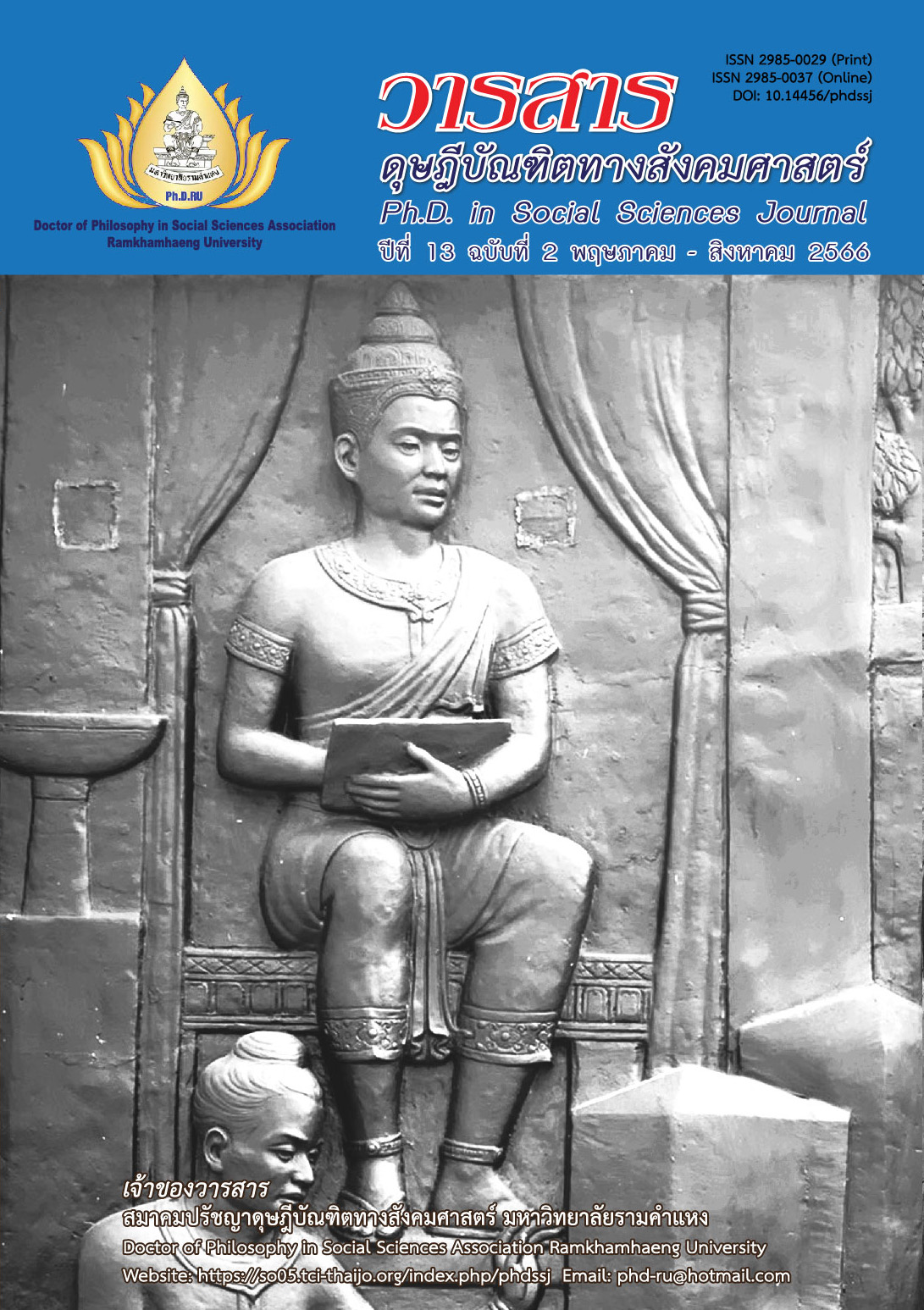รูปแบบการประเมินสมรรถนะอาจารย์สอนแพทย์แผนไทย
Main Article Content
บทคัดย่อ
บทความวิจัยนี้มีวัตถุประสงค์เพื่อ (1) ศึกษาสมรรถนะที่จำเป็นของอาจารย์สอนแพทย์แผนไทย (2) สร้างรูปแบบการประเมินประกอบสมรรถนะที่จำเป็นที่ประกอบไปด้วย เครื่องมือวัด ตัวชี้วัด เกณฑ์การประเมิน และคู่มือการใช้รูปแบบสมรรถนะอาจารย์สอนแพทย์แผนไทย (3) เพื่อหาความสัมพันธ์สมรรถนะด้านความรู้ทางด้านทักษะและทางด้านคุณลักษณะ ระหว่างผลการประเมินตนเองกับหัวหน้าสาขาประเมินของแพทย์แผนไทย และ (4) เพื่อเปรียบเทียบผลการประเมินตนเองกับหัวหน้าสาขาประเมินในแต่ละระดับคุณภาพ ทางด้านความรู้ ทักษะ และคุณลักษณะ ผู้ให้ข้อมูลหลัก คือ ผู้เชี่ยวชาญจำนวน 18 คน ใช้สถิติค่ามัธยฐานและค่าพิสัยระหว่างควอไทล์ และสร้างรูปแบบการประเมินประกอบสมรรถนะที่จำเป็น ประกอบด้วย เครื่องมือวัด ตัวชี้วัด เกณฑ์การประเมิน และคู่มือการใช้รูปแบบสมรรถนะนำไปประเมินกลุ่มตัวอย่างอาจารย์สอนและหัวหน้าภาควิชา จำนวน 204 คน เคราะห์ด้วยสถิติ Pearson Correlation และ Friedman Test
ผลการวิจัย พบว่า สมรรถนะที่จำเป็น ได้แก่ สมรรถนะทางด้านความรู้ ทักษะ และคุณลักษณะ สมรรถนะทางด้านความรู้ ได้แก่ การแพทย์แผนไทย 4 สาขา เวชกรรมไทย เภสัชกรรมไทย ผดุงครรภ์ไทย และนวดไทย หลักการเทคนิคการสอนและการถ่ายทอดความรู้ สมรรถนะทางด้านทักษะ ได้แก่ การแพทย์แผนไทย 4 สาขา การพิสูจน์เอกลักษณ์พืชและสมุนไพร และสมรรถนะทางด้านคุณลักษณะ ได้แก่ เจตคติที่ดี ปฏิบัติตาม “แพทยลังการ”และรูปแบบการประเมินสมรรถนะอาจารย์สอนแพทย์แผนไทย ประกอบด้วย และคู่มือการใช้รูปแบบสมรรถนะอาจารย์สอนแพทย์แผนไทย ผลการเปรียบเทียบ พบว่า ผลการประเมินตนเองกับผลการประเมินของหัวหน้าสาขาให้ผลไม่แตกต่างกัน p > .05
Article Details

อนุญาตภายใต้เงื่อนไข Creative Commons Attribution-NonCommercial-NoDerivatives 4.0 International License.
บทความวิชาการ บทความวิจัย และบทวิจารณ์หนังสือในวารสารดุษฎีบัณฑิตทางสังคมศาสตร์ เป็นความคิดเห็นของผู้เขียน มิใช่ของคณะผู้จัดทำ และมิใช่ความรับผิดชอบของสมาคมปรัชญาดุษฎีบัณฑิตทางสังคมศาสตร์ มหาวิทยาลัยรามคำแหง (กรณีการทำวิจัยในมนุษย์ ผู้วิจัยต้องผ่านการอบรมจริยธรรมการวิจัยในมนุษย์ และนำหลักฐานมาแสดง)
เอกสารอ้างอิง
Andrade, H. (2008). Self-assessment through rubrics. Educational Leadership, 65(4), 60-63.
Arandorn, D. (2016). Desirable competencies of the professionals of Thai traditional medicine. Master’s Thesis of Pharmacy (Social and Administrative Pharmacy), Prince of Songkla University. [In Thai]
Bardo, J. W., & Hartman, J. J. (1982). Urban society: A systematic introduction. F. E. Peacock.
Burstein, L., Oakes, J., & Guiton, G. (1992). Education indicators. In M. C. Alkin (Ed.), Encyclopedia of educational research vol. 2 (pp. 410-418). Macmillan.
Chaiso, P., Sarnswang, S., Wongwanich Rumpagaporn, M., Meesuk, P., & Thanarachataphoom, T. (2018). Monitoring and evaluation of educational management in Vocational Courses and Upper Secondary School (Twisuksa). Office of the Education Council. [In Thai]
Cruthaka, C. (2012). Desirable research competencies of university lecturers. Ramkhamhaeng Research Journal of Humanities and Social Sciences, 15(Special Issues), 21-37. [In Thai]
Fongsri, P. (2015). Classroom research: Principles and practice techniques (10th ed.). Darnsutha. [In Thai]
Jindarak, P. (2017). Competency development for academic staff in high education. Journal of Graduate Studies Valaya Alongkron Rajabhat University, 11(1), 221-233.
Keeves, J. P. (1988). Educational research, methodology, and measurement: An international handbook. Pergamon.
Kendra, C. (2020). Just Noticeable Difference (JND) in Psychology. Retrieved from https://www.verywellmind.com/what-is-the-just-noticeable-difference-2795306
Ketchararat, M., Buasuwan, P., & Wichitputchraporn, W. (2015). A Study of desirable competencies of Kasetsart University Lecturers. Journal of Education Studies, 43(1), 112-127. [In Thai]
King Mongkut’s University of Technology North Bangkok. (2015). Information, King Mongkut's University of Technology North Bangkok, academic year 2015. Author. [In Thai]
Klenowski, V. (1995). Student self-evaluation processes in student-centred teaching and learning contexts of Australia and England. Assessment in Education: Principles, Policy & Practice, 2(2), 145-163.
Kongsat, S., & Thammawong, T. (2008). Determination of questionnaire validity (IOC). Retrieved from https://www.mcu.ac.th/article/detail/14329 [In Thai]
Ministry of Education. (2012). Announcement of the Ministry of Education on bachelor’s degree qualification standards in applied Thai traditional medicine. Retrieved from https://www.moe.go.th/backend/wp-content/uploads/2020/11/41.pdf [In Thai]
Office of the Civil Service Commission. (2010). Handbook for determining competencies in the civil service: A guide to core competencies. Author. [In Thai]
Ross, J. A. (2006). The reliability, validity, and utility of self-assessment. Practical Assessment, Research, and Evaluation, 11(10), 1-13.
Sekharariddhi, V. (2016). Competency-based personnel development. Retrieved from https://president.su.ac.th/personnel/images/Project/Project59/Support-01/07-18022559.pdf [In Thai]
Srisaard, U. (2018). Self-evaluation. Journal of Educational Measurement Mahasarakham University, 17(2), 1-5. [In Thai]
Stufflebeam, D. L. (2003). The CIPP model of evaluation. In T. Kellaghan, D. Stufflebeam, & L. Wingate (Eds.), International handbooks of education: Kluwer international handbook of educational evaluation (pp. 31-62). Springer.
Thai Traditional Medical Council. (2014). Regulations of the Thai Traditional Medical Council regarding criteria, methods and conditions for certifying institutions that provide degrees or certificates equivalent to degrees Thai Traditional Medicine or Applied Thai Traditional Medicine B.E. 2557. Retrieved form https://ratchakitcha.soc.go.th/documents/2029973.pdf [In Thai]
Thai Traditional Medical Council. (2015). Accreditation of an institution or medical facility. Retrieved from https://thaimed.or.th/home/?page_id=7733 [In Thai]
Thai Traditional Medical Professions Act, B.E. 2556. (2013). Royal Thai Government Gazette, 130(10 A), 1-20. [In Thai]
Thai traditional medicine teacher and student graduated from Thai traditional medicine or applied Thai traditional medicine program in Bangkok area. (2017). Interviews with Opinions on the Development of Instructional Guidelines, Transcribe Audio Tapes. [In Thai]
Thailand Innovation Administration Consultancy Institute. (2020). Study and research on the improvement of the position classification system and compensation of local government officials (phase 2). Author. [In Thai]
Thongborisut, S. (2010). Desired characteristic of veterinary instructors as perceived by students at Chulalongkorn University. Master’s Thesis of Education (Higher Education), Srinakharinwirot University. [In Thai]
Thongpanit, P. (2018). The new curriculum evaluation: CIPPIEST model (Stufflebeam). Retrieved from http://yenruedeex42.blogspot.com/2018/11/stufflebeam.html [In Thai]
Tirakanant, S. (2010). Nonparametric statistics. Chulalongkorn University Press. [In Thai]
Vanichbuncha, K. (2012). Using SPSS for windows to analyze data (20th ed.). Chulalongkorn University, Faculty of Commerce and Accountancy. [In Thai]
Vorathepputipong, T. (1997). Public policy formulation and analysis: Theory and application. Semadham. [In Thai]
Wiratchai, N. (2002). Development of indicators for administration and management assessment of educational service area. Tharn-Aksorn. [In Thai]
Yodsongtrakul, S. (2019). Instructors: The key performance indicator in quality assurance. Journal of Education Silpakorn University, 17(2), 22-32. [In Thai]


